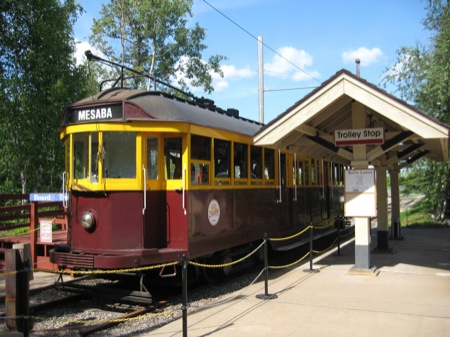
Courtesy Minnesota Discovery Center
If you’re in the mood to experience Europe but not for an overseas airplane ride, America’s heartland may be just your ticket.
European immigrants have played an instrumental role in the development of America’s Midwest, and many destinations still exude a charming ethnic flavor. In small communities like Pella, Iowa, and Dublin, Ohio, the entire town is wrapped up in the traditions and heritage of the mother country.
Swiss food and drink still permeate New Glarus, Wis., and a series of annual festivals highlight the German heritage of Dubois County, Ind.
Groups can experience the ethnic flair of these areas in a variety of ways, from cuisine to art galleries, living-history centers, and art and music presentations. The next time you crave some European flavor, consider a trip to one of these close-to-home havens of ethnic heritage.
New Glarus, Wis.
In the 1840s, a group of settlers from the Swiss canton of Glarus came to the United States looking for a new home. They settled for an area in southern Wisconsin, naming it New Glarus, and establishing many of their traditional crafts and businesses.
“New Glarus is known as America’s Little Switzerland,” said Noreen Rueckert, director of Green County Tourism. “The settlers brought their Swiss traditions, Swiss language, Swiss food and Swiss festivals. There are still people here that speak to each other in Swiss German.”
Groups that visit the area can enjoy the Swiss heritage in a number of ways. Among the most popular is a visit to the National Historic Cheesemaking Center, which demonstrates classic Swiss methods.
At the Alp and Dell Cheese Store, visitors can watch cheese being made, taste traditional cheeses and take a bag of Wisconsin’s famous cheese curds to go.
Other options include a tour of a craft brewery and stops at shops that specialize in Swiss fudge and sausage.
A lot of groups opt to experience another Swiss classic: fondue.
“Bus groups enjoy having a fondue demonstration and learning about how it started,” Rueckert said. “The chef talks to them about it and gives them a sample, and we have people come who yodel and play the alpenhorn.”
The Swiss Historic Village, a replica of the original Swiss settlement in New Glarus, demonstrates the life of early settlers with a church, a general store, a cheese factory and a sausage shop.
Pella, Iowa
Walking along the Molengracht, visitors to Pella, Iowa, get a sense of the town’s Dutch heritage and a glimpse of life in modern Amsterdam.
“The Molengracht area has a little canal running through it, as well as a little drawbridge,” said Jill Vandevoort, director of the Pella Convention and Visitors Bureau. “It’s a replica of what Amsterdam might be like today, with an entire block having European-faced buildings that house a hotel, office buildings and retail shops. It’s all centered around the canal.”
Just across from the canal area is Vermeer Mill, which locals bill as the largest working grain windmill in the country. The mill is part of the Pella Historic Village, a re-creation of a village in the Netherlands that also has a blacksmith shop, a wood shoe shop and other historic buildings.
The historical village sells the flour ground in the mill to Jaarsma, one of two Dutch bakeries downtown. The bakers use it to make Windmill Bread; other favorite baked goods include Dutch letters and the stroopwafel, a caramelized, waffle-shaped breakfast pastry.
The pastries are just part of a culinary tour in Pella.
“We have two Swiss meat markets on our downtown square,” Vandevoort said. “Ulrich’s Meat Market specializes in Dutch spiced meat, Pella bologna and Pella dried beef. We also have cheesemakers and wineries in the area.”
www.pella.org












